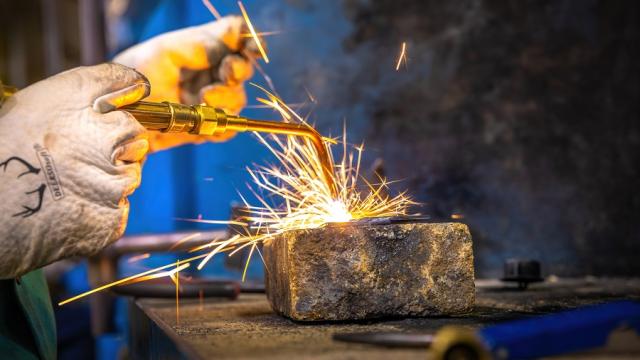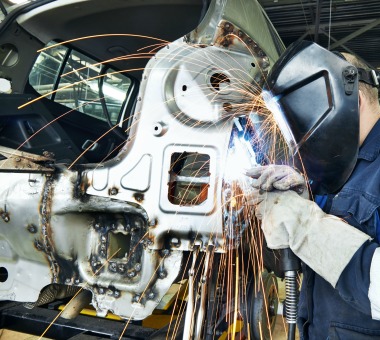Usual Welding Repair Work Issues and How to Address Them Properly
Welding repair work usually encounter a variety of problems that can jeopardize the honesty of the final item. Common problems consist of poor infiltration, porosity, and misalignment, amongst others. Each defect provides special obstacles that require certain methods for resolution. Understanding these problems is essential for welders aiming to enhance their end results and abilities. This conversation will check out these common welding repair service issues and effective techniques to resolve them.
Insufficient Infiltration
Poor infiltration takes place when the weld steel falls short to totally fuse with the base material, causing weak joints and potential structural failings. This issue frequently stems from not enough heat input, incorrect electrode angle, or incorrect welding speed. Welders might experience inadequate penetration as a result of a miscalculation of the required parameters for a particular material thickness or kind. Furthermore, contamination on the base material's surface can hinder efficient bonding, aggravating the problem. To resolve inadequate infiltration, welders should assure proper settings on their equipment and maintain a tidy job surface. Routine assessment of welds is advised to recognize any deficiencies early, permitting timely modifications and the prevention of jeopardized architectural integrity in bonded settings up.
Porosity
Porosity is an usual issue in welded joints that materializes as tiny gas bubbles trapped within the weld steel. This defect can compromise the honesty of the weld, bring about decreased stamina and potential failure under stress and anxiety. Montana Mobile Welding and Repair Belgrade Welding. Porosity generally emerges from contamination, dampness, or incorrect welding strategies, which enable gases to run away right into the liquified weld pool. To resolve porosity, welders must assure correct surface prep work, maintain a clean working atmosphere, and use suitable welding criteria. Additionally, picking the appropriate filler product and securing gas can reduce gas entrapment. Routine inspection and testing of welds can help identify porosity early, guaranteeing prompt rehabilitative activities are taken, thus preserving the quality and integrity of the welded framework
Misalignment
Misalignment in welding can emerge from various variables, consisting of incorrect arrangement and thermal expansion. Understanding the origin is essential for effective resolution. A number of modification methods are offered to realign parts and ensure architectural integrity.
Reasons for Misalignment
Welding misalignment often originates from a variety of underlying issues that can jeopardize structural integrity. One main cause is inappropriate fit-up of parts prior to welding, which can lead to voids and unequal surface areas. Variants in thermal growth during the welding process can likewise cause distortion, especially if the materials being signed up with have different coefficients of expansion. In addition, poor securing and fixturing may fail to hold components securely in position, leading to activity during welding. Badly kept devices, including welding equipments and devices, may present incongruities in the weld bead, more adding to misalignment. Driver error, stemming from insufficient training or experience, can likewise play a considerable duty in producing misaligned welds.

Improvement Strategies Available
Attending to misalignment effectively requires a mix of corrective techniques customized to the specific concerns available. One typical method is using fixtures or jigs to hold elements in the proper position throughout welding, guaranteeing regular alignment. Additionally, preheating the materials can help decrease distortion and enhance fit-up. For significant misalignment, mechanical adjustment techniques, such as making use of hydraulic jacks or clamps, can be used to remedy the placement prior to welding. Post-weld heat therapy might likewise be required to alleviate stresses brought on by misalignment. Ultimately, cautious evaluation and change throughout the configuration stage can stop misalignment concerns from ending up being considerable troubles, promoting a smoother welding procedure and enhancing total architectural stability.
Distortion
Distortion is a typical challenge in welding that can emerge from numerous variables, consisting of unequal heating and air conditioning. Understanding the reasons for distortion is crucial for carrying out efficient avoidance strategies. Resolving this problem not only boosts structural stability but also improves the general top quality of the weld.
Root causes of Distortion
When subjected to the extreme heat of welding, materials typically go through modifications that can lead to distortion. This sensation mainly occurs from thermal development and contraction throughout the welding process. As the weld area warms up, the product increases; upon air conditioning, it gets, which can develop interior stress and anxieties. Additionally, uneven heating across a workpiece can aggravate these anxieties, causing warping or flexing. The kind of product additionally plays a significant function; steels with varying thermal conductivity and coefficients of expansion might respond in different ways, causing uncertain distortions. Inadequate joint design and insufficient fixturing can add to imbalance during welding, raising the probability of distortion. Understanding these reasons is necessary for reliable welding repair and avoidance methods.
Prevention Techniques
Effective prevention strategies for distortion throughout welding focus on controlling heat input and guaranteeing proper joint design. Keeping a regular warm input aids to reduce thermal expansion and tightening, which can bring about distortion. Utilizing strategies such as pre-heating the work surface can likewise reduce the temperature slope, advertising uniform heating. outlaw welding In addition, selecting proper joint designs, such as T-joints or lap joints, can improve stability and minimize stress and anxiety concentrations. Implementing proper fixturing to protect the work surfaces in place additionally aids in preserving alignment throughout the welding procedure. Lastly, staggered welding sequences can distribute warmth extra evenly, stopping local distortion. By applying these approaches, welders can substantially decrease the chance of distortion and improve the general top quality of their welds.
Fracturing
Fracturing is a common problem come across in welding fixings, typically arising from different factors such as incorrect air conditioning rates, material option, or inadequate joint preparation. The incident of fractures can considerably compromise the integrity of the weld, leading to possible failures during procedure. To resolve this issue, welders have to initially evaluate the origin, making sure that materials are suitable and appropriately selected for the details application. In addition, managing the cooling price throughout the welding procedure is important; fast air conditioning can cause tension and cause splitting. Proper joint style and preparation likewise add to reducing the danger. Executing these methods can boost weld quality and sturdiness, inevitably minimizing Continue the likelihood of cracking in finished weldments.

Insufficient Combination
A substantial issue in welding fixings is incomplete blend, which takes place when the weld steel does not effectively bond with the base material or previous weld passes - Fabrication. This flaw can cause weak points in the joint, potentially endangering the honesty of the welded structure. Aspects contributing to incomplete blend consist of not enough heat input, incorrect welding strategy, and contamination of the surfaces being signed up with. To address this issue successfully, welders need to assure appropriate pre-weld cleaning and surface preparation, in addition to change their welding specifications to achieve adequate penetration and fusion. Normal assessment throughout the welding process can additionally aid identify insufficient blend early, permitting prompt rehabilitative steps to improve the general top quality of the weld
Overheating
While welding fixings can enhance architectural stability, overheating provides a significant obstacle that can bring about product deterioration. Extreme warm during welding can modify the mechanical homes of steels, leading to lowered stamina, increased brittleness, and warping. This phenomenon is especially essential in high-stress applications where structural integrity is paramount. Determining overheating can include visual examinations for discoloration or distortion, along with keeping track of temperature level during the welding process. To minimize the threats connected with overheating, welders should use ideal strategies, such as regulating warm input, readjusting traveling rate, and using suitable filler materials. Furthermore, executing pre- and post-weld warm therapies can aid recover material buildings and enhance the overall quality of the repair service, guaranteeing lasting efficiency and safety.
Frequently Asked Questions
What Are the Common Signs of a Welding Defect?

Exactly How Can I Check My Welds for Quality?
To check welds for top quality, one can make use of aesthetic assessments, ultrasonic testing, and radiographic methods. Each method assures structural honesty, identifies problems, and verifies adherence to defined requirements, eventually boosting the dependability of the bonded joints.
What Security Safety Measures Should I Take While Welding?
When welding, one must prioritize security by putting on proper individual protective tools, making certain appropriate Going Here air flow, securing combustible products away, maintaining a clean work space, and being conscious of environments to prevent injuries and crashes.
Can I Fix a Weld Without Redesigning the Entire Joint?
Fixing a weld without renovating the entire joint is possible, depending upon the damage (Montana Mobile Welding and Repair Welding). Techniques such as grinding, adding filler material, or using a welding process can successfully resolve specific problems while preserving the bordering structure
What Tools Are Vital for Effective Welding Fixes?
Vital devices for efficient welding repair services consist of a welding maker, wire brush, grinder, protective gear, clamps, and filler materials. Each tool plays an essential function in guaranteeing quality and safety throughout the repair process. Porosity usually arises from contamination, dampness, or improper welding techniques, which permit gases to run away into the molten weld swimming pool. Poorly maintained devices, consisting of welding equipments and tools, may present disparities in the weld bead, additional adding to misalignment. When subjected to the intense warmth of welding, materials typically undergo modifications that can lead to distortion. Fracturing is an usual concern experienced in welding fixings, frequently resulting from different variables such as inappropriate cooling prices, product option, or poor joint preparation. A substantial problem in welding repair services is insufficient combination, which happens when the weld metal does not effectively bond with the base material or previous weld passes.